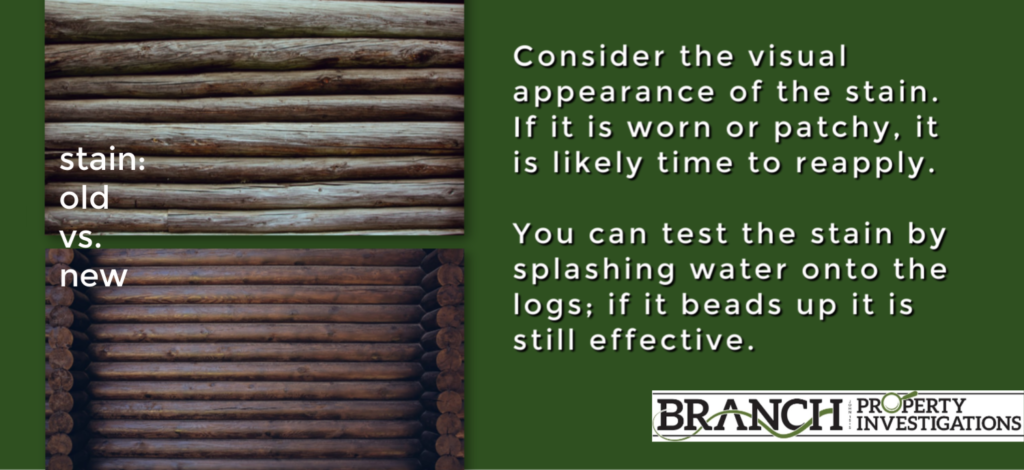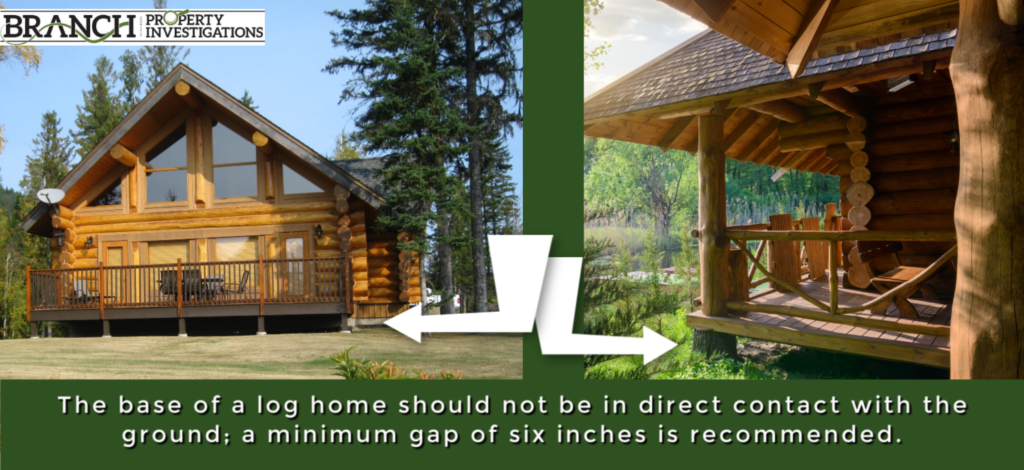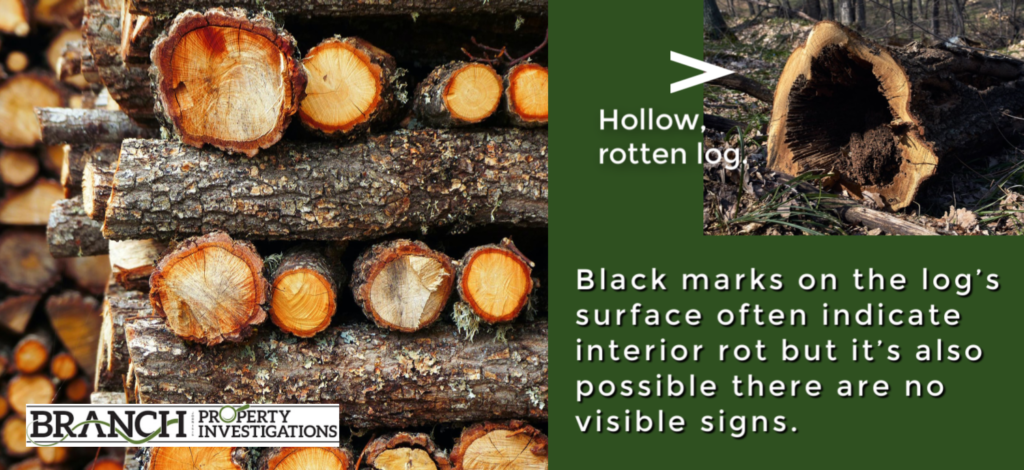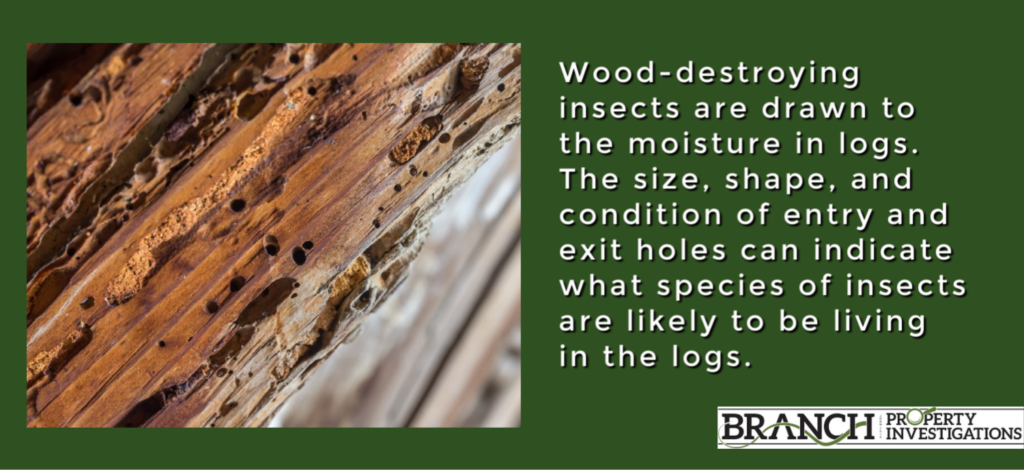Lakeside log homes are extremely common in northern Minnesota but yesterday I arrived to inspect a property in a western, Twin Cities suburb and to my surprise, it was a charming log home. Log homes have some characteristics that are very different from conventional homes. It’s important for buyers to pay attention to these differences before buying a log home.
MOISTURE
Water is the greatest enemy of log homes. It’s not a problem for logs to get wet; they usually dry. The problem occurs when logs don’t dry and begin to rot. This is why most log homes are stained or have weatherproofing. Today I’ll point out some different ways moisture can wreak havoc on log homes.
STAINING A LOG HOME
Usually you can tell how good the staining job is just by visual appearance but it’s definitely worth asking the sellers when the home was last stained. If you find wood without stain or if it’s patchy, take this into consideration. Also look for logs that are a different color on the top than they are at the bottom. Check the south and west walls of the home for extensive sun-fading.
An easy way to test the effectiveness of the staining is to splash water on the logs. The water should bead up. This indicates the finish is still effective. If the water is absorbed into the logs, then it’s safe to assume the stain is no longer effective. This should not be alarming but you’ll want to factor in the cost of re-staining into your offer.
LOGS TOUCHING THE GROUND
Be sure to check that the base of the log home is not in direct contact with the ground; it should be raised a minimum of six inches. Logs that come in direct contact with the ground soak up moisture and be prone to wood rot. Any logs that come into contact with the ground give insects easy-access to the home as well. Logs that have been pressure treated have a better chance of withstanding rot and insect infestation.
ROTTEN LOGS
If you do encounter inadequate staining or logs touching the ground, rotten logs may be of concern. Lower wall logs are also at risk, since they can be soaked by splashback during rain and are less protected by the roof overhang.
Black marks on the log’s surface often indicate interior rot but it’s also possible there are no visible signs. I’ve found the best way to check is to see if you can notice a difference in sound when tapping on the logs.
First, you’ll need to receive permission from the homeowner. Next, grab a hammer and gently tap on the logs. A log that is rotting will likely produce a hollow noise compared to a solid log. Some logs with interior rot will bounce the hammer back when tapped. A solid log is more apt to stop the hammer. If you do encounter rotten logs, the only solution is to replace them so be sure this is within your budget.
WOOD-DESTROYING INSECTS IN A LOG HOME
Wood-destroying insects are drawn to the moisture in logs. Therefore, the most effective way to reduce infestations is to replace rotten logs. How will you know if insects are an issue? They usually leave some clue as to their presence.
Both termites and carpenter ants grow wings and swarm to new locations every so often. When they arrive at their destination, they shed their wings and burrow into the wood. Wing piles are a sign that you shouldn’t miss. You may also see dead insects on window sills inside the home if the swarm originates inside the home. The size, shape, and condition of entry and exit holes can indicate what species of insects are likely to be living in the logs.
SETTLING – HOW IT IMPACTS A LOG HOME
Settling is the loss of wall height over time. It’s one of the major concerns for a log home. Let’s look at some of the causes and consequences of settling as outlined by the International Association of Certified Home Inspectors. Again, we’ll see moisture playing a huge factor!
Log homes may be built from green logs, which are recently cut logs with a high moisture content. Or, they may be built using logs that have been kiln-dried so that their moisture content is no higher than 19%. Some log homes may have been built using logs with a moisture content somewhere between these two extremes.
Moisture content is important because as long as logs continue to lose bound water — which is the water contained in the wood’s cell material, as opposed to the water in the cell cavities — the logs will continue to shrink in diameter. When logs shrink, the log walls settle, which will result in a loss of height. In a home built with green logs, it’s possible for an 8-foot tall wall to lose 6 inches in height by the time the home has finished settling. When a home has stopped settling, we say it has reached “equilibrium moisture content” (EMC) with its environment.
Allowances must be made during construction of log homes to accommodate the inevitable process of settling because a variety of components can be affected. Log homes built with kiln-dried logs and protected from moisture absorption during construction will have less moisture and settling issues if the finish is maintained to protect the logs. If these conditions are not kept up, structural settling issues can lead to expensive repairs as the structural load may be transferred from the outside walls to interior partition walls that were not designed as load-bearing walls.
QUESTIONS TO ASK BEFORE YOU BUY A LOG HOME
Here are a handful of helpful questions to consider before going further down the road:
- When was the log home built?
- When was the last time it was stained?
- Is the log home insured? (If the home is too great a risk for an insurance agency, you’ll want to know this ahead of time!)
- Have any disclosures been made? (Specifically on wood rot, insects, or drainage issues?)
Please reach out if you are considering purchasing a log home and need an inspection, we’d love to hear from you! (612) 440-8466 or visit our website at branchinvestigations.com.






